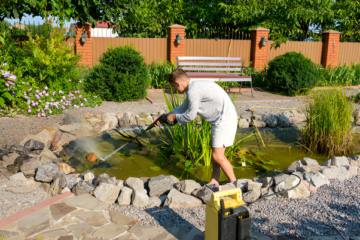Maintenance Practices of Bathtubs and Showers

Drains in the bathtubs and showers may form residues of dirt, soap, and debris if not rinsed down appropriately. Limited residue development prevents mildew growth. It is essential to inspect often and repair areas prone to water infiltration. A well-maintained bathroom or shower exhibits an attractive appearance and creates an eco-friendly surrounding. Some of the critical practices to undertake for prolonged service include;
Proper cleaning: It is vital to clean hot tubs aurora co surfaces, doors, showers, and curtains regularly to deter the formation of white film. Additionally, wiping down bathroom surfaces limits the formation of residues. When carrying out, thorough cleaning, consider the bathroom material to determine the type of cleaners to use. For most surfaces, you can use hot water, non-abrasive liquid, and a soft cloth. For door cleaning, you can use abrasive cleaners. Curtains can be hand washed and replaced.
Inspect tile and grout: Extended water contact with bathroom building materials can lead to deterioration, mildew growth, and damage. To prevent water infiltration into the wall cavity, check for damaged tile or cracked grout and make necessary repairs.
Check sealant and caulk: Over time, caulk and sealant may deteriorate, leading to leaking. Sealant and caulk applied during installation should be removed and replaced after every five years. Seal gaps present and make necessary repairs.
Inspect gaps indoors
- Track the frame installation and seal any openings to prevent water from exiting the bathroom unit.
- Inspect regularly for standing water.
- Drill small holes to allow water to drain back into the shower unit.
Comparison between Wet room and Walk-in Shower
A wet room encompasses an entirely open space plan where the water flows away via a draining floor. A walk-in shower incorporates one or two glass screens and a low-level shower tray. The wet room floor has a slight gradient to allow the flow of water. A walk-in shower is divided into a showering area and drying off space. The wet floor is wholly sealed with waterproofing boarding, and glass fitting can be integrated to protect towels from water splash. Some of the merits associated with walk-in showers include:
- Perfect for small bathrooms: Unlike bulky showers, walk-in showers eliminate the need for high tray and shower doors. Walk-in showers create an illusion of more space.
- Easy maintenance: As the shower features a glass screen, shower head, and shower tray, it is easy to clean than traditional showers.
- Durable design: Walk-in shower features minimal fittings; hence it’s a robust shower option that can last for long.
- Creates a more ample space: With flexible nature, you can install a walk-in shower without a tray. With plenty of space, you can wash the kids with ease.
- Ideal for individuals with mobility hurdles: The doorless design is an excellent choice for the elderly and people with limited mobility. It removes the struggles to lift legs over a bath.
Advantages of wet rooms
- Adds value to your home: An adequately installed wet room in an en-suite creates a selling point.
- Easy access: Due to the lack of a shower tray, it is ideal for the disabled and the elderly.
- Easy to clean: Wet rooms lack shower trays, thus minimal cleaning areas.
Factors to consider when choosing a shower type
- Water pressure: depending on the water system supplying the water, check if the water pressure is low or high.
- Showerhead and tray: Integrating the best shower head gives you the best controls over your preferred temperature inside the shower.
- Style and design: Integrating up-to-date aesthetics in your bathroom enhances comfortability.
Conclusion
Shower styles and designs are vital in effecting an ultimate shower experience. Depending on the type of shower you opt for, integrate mechanisms to provide hot or cold water supplies.










